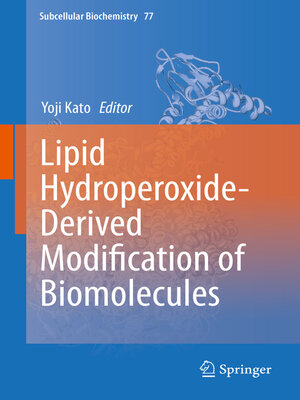Lipid Hydroperoxide-Derived Modification of Biomolecules
ebook ∣ Subcellular Biochemistry
By Yoji Kato

Sign up to save your library
With an OverDrive account, you can save your favorite libraries for at-a-glance information about availability. Find out more about OverDrive accounts.
Find this title in Libby, the library reading app by OverDrive.



Search for a digital library with this title
Title found at these libraries:
| Library Name | Distance |
|---|---|
| Loading... |
Lipid peroxidation is an important cellular process which can lead to detrimental effects if it is not regulated efficiently. Lipid hydroperoxide is formed in an initial step of lipid peroxidation. Lipid hydroperoxide is also known as a potential source of singlet oxygen. Harmful aldehydes are formed when the lipid hydroperoxide is degraded. The formed aldehyde has high reactivity against thiol or amine moieties. Therefore, it could act as a signaling molecule, which might induce the changing of gears inside a cell. Recent studies have shown that lipid hydroperoxide or a slightly modified product of the lipid hydroperoxide reacts with biomolecules such as proteins and aminophospholipids, which leads to formation of amide-type adducts. Amide-type adducts could be one of markers for oxidative stress and could also be an important player in some diseases. In this book, the chemistry and biochemistry of lipid hydroperoxide along with their conjugates with biomolecules are described.







